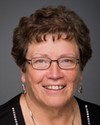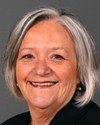Thank you. I'd like to thank the committee for inviting Statistics Canada here today to make a presentation from the data we collect on the labour market conditions of men and women in Canada.
I have with me my colleague Rosemary Bender, director general of the social and demographic statistics branch. I'm the director of the social and aboriginal statistics division of Statistics Canada. Also with us is Cara Williams, who is the chief of our social analysis and research section.
You have a presentation in front of you, and I'm going to walk you through it. I'll indicate which slide I'm on. We're going to show you some numbers and go carefully through them to provide you with some sense of those numbers.
First I will present information on the educational situation of men and women in Canada, as that's an important factor when we consider the labour market outcomes of women and men. Then I will present information on labour market trends for women and men in Canada over time. We particularly want to focus on average hourly wages of women and men, their employment situation in terms of employment rates and how they have changed over time, and their average earnings.
We'd be pleased to answer your questions at the end of the presentation.
The graph on page 3 shows the educational attainment of men and women as of the 2006 census. In terms of post-secondary education, a slightly higher proportion of women have university degrees and college certificates than men. On the other hand, men are more likely to have trade certificates.
The graph on page 4 shows the major fields of study of men and women post-secondary graduates, as of the 2006 census. As you can see, there are differences in the fields of study between men and women. Men were more likely to graduate from engineering, architecture, and applied sciences such as mathematics, computer sciences, and physical and life sciences than are women. On the other hand, women were more likely to be graduating from the health sciences, business management, public administration, education, and the social sciences, including law.
Fields of study have an impact on the types of occupations individuals work in and on their wages and earnings. Graph number 5 shows the average hourly wages for men and women working full-time over time, 1997 to 2008, regardless of their occupation. As you can see, the average hourly rates of both men and women have gradually increased over time, with men earning slightly more than women on average. In 1997, women working full-time earned an average of $14.86 per hour, and men earned around $18 per hour. In 2008, the average hourly earnings for women working full-time were almost $21 and for men $24. So the gap between men and women's average hourly wages has remained relatively the same over these 11 years.
The graph on page 6 shows how the average hourly wage ratio varies by certain occupations. Of course, at Statistics Canada we collect a vast amount of data on this, but I'm selecting a few occupations to provide an indication of some key trends. For the three occupations in this grouping, we can see that the female-to-male wage ratios have increased over the period. This means that the difference between average hourly wages of women and men has decreased.
For example, in the health-related occupations—that's the blue line on the graph—women earned 91% of what men earned in 1997. This has increased such that women's wages were about 4% higher than those of men in more recent years. In the natural and applied science occupations—that's the yellow line on the graph—women's average hourly earnings were 88% of those of their male counterparts, up from 85% in 1997. In business, finance, and administrative occupations—the red line on the graph—women's average hourly wages were 85% of those of men, and that's up from 83% in 1997.
The largest difference in hourly wages between women and men was in occupations related to primary industries, manufacturing, and processing, where women's average hourly wages were about 70% of those of men in 2008.
The graph on page 7 shows the employment rate of men and women over time, from 1976 to 2008. As you can see, women's employment rates have been steadily increasing since 1976, while men's employment rates have been decreasing slightly, gradually narrowing the gap between men's and women's employment rates over time.
In 2008, women's employment rate was 59%, compared with 67% for men. That's a difference of eight percentage points. In contrast, in 1976, that difference was about 31 percentage points. Women's employment rate was 42% in 1976, compared with 73% for men.
The graph on page 8 shows the part-time rate of women and men as a percentage of total employment. That's again over the same period of time, 1976 to 2008. While employment rates have increased for women, women are more likely to work part-time than men.
In 2008, for example, about a quarter, 26%, of employed women were working part-time, compared with 11% of men. There has been a decline since 1976 in the difference between men and women working part-time, mostly as a result of a higher proportion of men working part-time. Women were also more likely to work part-time for non-economic reasons; for example, for care of children. They were also more likely to be temporary employees—that is, employees with a fixed employment term—and on average to have fewer years of work experience than men, as they are more likely to take time away from the labour market for family formation and family responsibilities. All of these factors affect average earnings.
The final graph, on page 9, shows the female-to-male earnings ratio, which is the black line, calculated for all earners as well as for full-time, full year workers, which is the red line. The earning ratio illustrates how the difference between women's and men's earnings changes over time. Data show, and I've certainly spoken about this, that the labour market situation for women is different from that for men. For example, I've spoken about women being more likely to work part-time, to work fewer hours, to have on average fewer years of work experience, and being more likely to be working in certain types of occupations, such as retail and services, than men. All of these factors, and often they're interrelated, have an impact on average earnings of women relative to the earnings of men.
On average, women earn less than men, as can be seen by the graph; however the earnings ratio has increased since 1997, narrowing the gap between what women earned relative to men. Among full year, full-time workers, for example, women earned 68% of what men earned in 1997. By 2006, women working full year, full-time earned 72% of what men working full year, full-time earned.
That concludes my presentation. There have been some improvements in both female-to-male relative earnings and average hourly wages over time, but a gap still exists; there are differences still existing between women and men. There are a number of factors, and I've talked about them, that help explain these differences. For example, women are more likely than men to work fewer hours, to work part-time, and to have fewer years of work experience.
Thank you.






